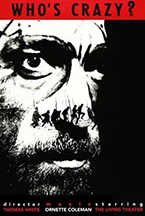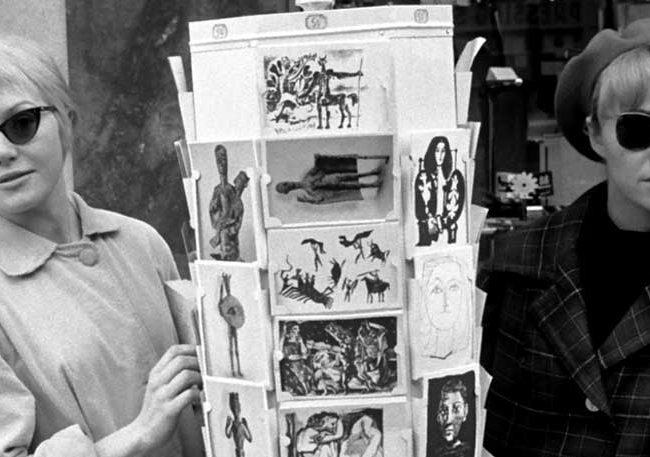
(Hammer to Nail takes a break from 2017 SXSW Film Festival coverage to bring you a special review of Thomas White’s legendary Who’s Crazy? featuring an amazing score by Ornette Coleman.)
If you don’t know the detailed provenance of Thomas White’s Who’s Crazy? (and you plan to see it) then keep it that way. Knowing the process, which at this point has been (for good reason) well documented, will undeniably affect your experience. (If you’ve seen it, or if you actually prefer to know the backstory, Richard Brody’s New Yorker review from last March does an excellent job of exploring it.) Think of it like a magic trick –you wouldn’t want to know how it was performed before actually seeing it, would you?
Who’s Crazy?, in its most crude form, is about a group of escaped (er, wandered-off) mental patients who make the most of their newfound freedom in a Belgian farmhouse for an unspecified (but short) amount of time. Top billing goes not to Mr. White or any of his cast but to Ornette Coleman, whose trio scored the film, and for good reason because Coleman’s music, accompanied at times by Marianne Faithfull, provides a feverish energy that at it’s weakest compliments the picture and at it’s strongest, overshadows it. Nevertheless underneath Coleman’s distinctive free jazz (which is arguably at its prime here) is a loose and often psychedelic exploration into freedom and sanity that has a habit of surprising you just when your interest begins to wane.
The patients start out on a bus clad in classic psychiatric uniforms which, albeit realistic for the time, give off the impression that crazy is simply an occupation. As soon as the group gets to the farmhouse, however, they shed their uniforms and in turn their societal designations and we can’t help but think of them as “normal” human beings. Furthering this ambiguity is an perplexing interlude containing a rare moment of “traditional” dialogue in which two of the patients sound perfectly sane, bringing to mind a potential McMurphy scenario ala One Flew Over the Cuckoo’s Nest.
One of the film’s most interesting attributes is the blurring of the diegetic/non-diegetic line in which we never see any lips move; so for the first fifteen minutes we’re unsure if the film is silent or our characters merely are. White inserts a few small sound effects which perpetuate this grey area (a dog barking, laughter) but it’s not until the group overwhelms the owner of the farmhouse chanting “Wah-ter” that it becomes clear the silence is merely a choice the characters make. The score continues to blur this line as Faithfull’s vocals and Coleman’s trio often operate diegetically and even at times provocatively as when the police finally arive and Coleman’s sax becomes a mechanism for mockery.
The actors’ portrayal of “crazy” is almost always rooted in theatricality. So much so that their (seemingly improvisational) behavior suggests the routine discovery that young children experience (“Wa-wa” they chant) or adults deep into an acid trip (constantly laughing and smiling). What’s fascinating about their behavior is their incessant desire for the ceremonial freedoms that have long been withheld from them. The group partakes in a trial, a wedding, several jam sessions, and dancing. Recalling Native American culture they dress in costume, don makeup, chant, and build fires.
Crazy or not, this group of inmates has been deprived of that which they hold sacred: “freedom, peace, truth, health, and sanity” as one of them so aptly heralds. During the mock trial someone proclaims, “He can’t be judged – he’s crazy” to which another responds, “Crazy has to be proven.”
– Charles Poekel (@Chaakles)











